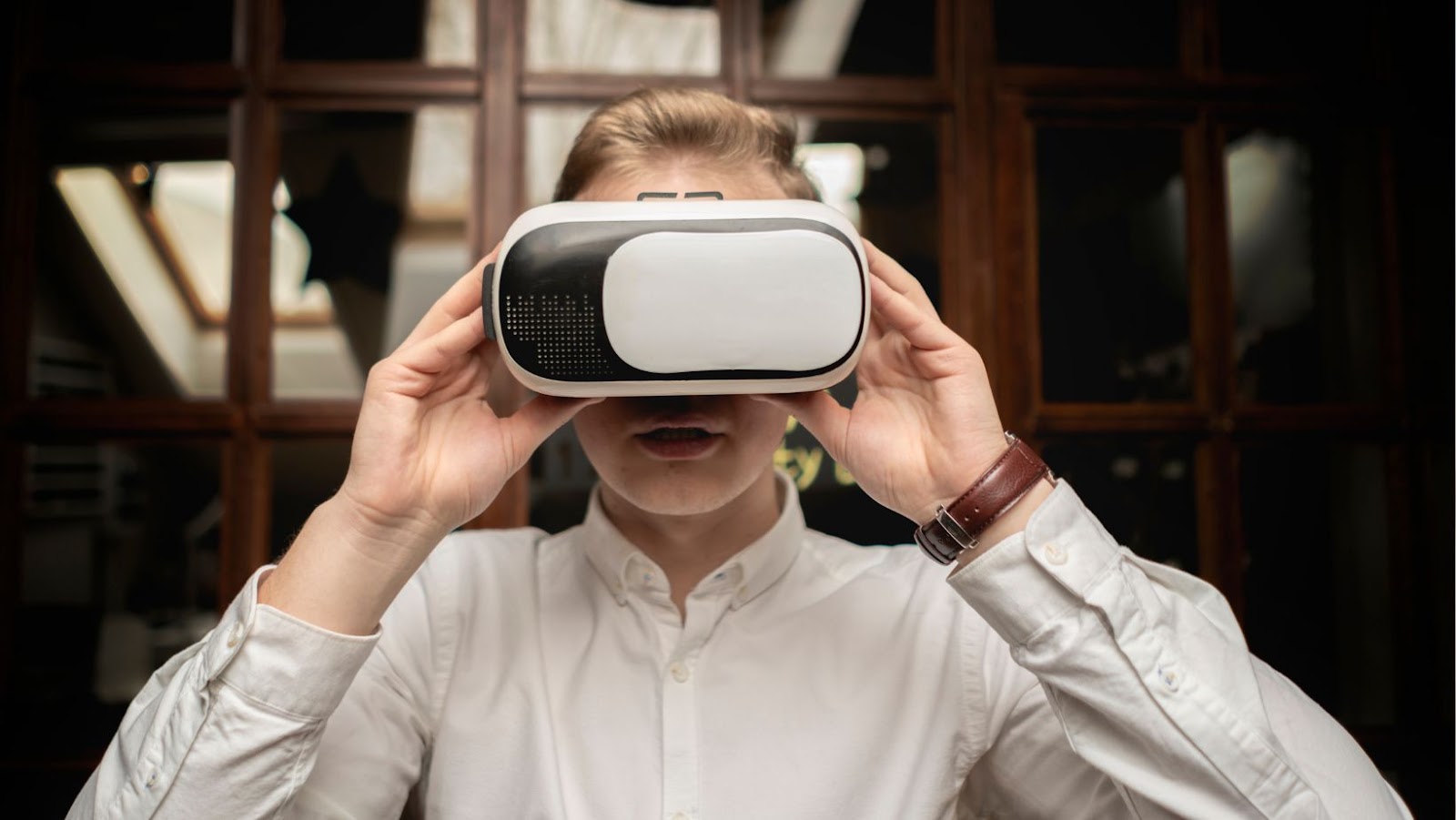 What is Electronic VR
What is Electronic VR
Electronic virtual reality or electronic VR, marks the intersection of the physical and digital world. It encompasses the creation of a simulated, computerized environment that simulates physical presence. Unlike traditional screen-based experiences, it does not merely project images flatly. Instead, it wraps them around the viewer in a multi-sensory, immersive display, providing interactive real world-like experiences.
What is Electronic VR? The operation of electronic VR rests on various crucial components. Primarily, it requires a computing device such as a PC or a console. This device runs the virtual reality software, generating the user’s visual, auditory, and sometimes haptic experiences.
Secondly, electronic VR employs a VR headset or HMD (Head-Mounted Display). This device wholly or partially covers the user’s field of vision, projecting the virtual environment directly in front of their eyes. It also tracks head movements, adjusting the display accordingly for a 360-degree viewing capability.
Finally, yet importantly, is the input device. Most frequently, these are hand controllers. They translate the user’s physical actions into virtual actions, delivering a fully immersive VR experience. These three constituents–computing device, VR headset, and input device–form a cohesive, effective unit, propelling the user into the realm of electronic VR.
 Evolution of Electronic VR
Evolution of Electronic VR
What is Electronic VR?Unraveling the history of Electronic VR serves to enrich the understanding of this cutting-edge technology. This segment tracks the path from earlier incarnations to the sophisticated systems of today.
In the late 20th century, several fledgling VR technologies emerged. These included the pioneering Sensorama machine, created by Morton Heilig in 1962. This machine strove to create multi-sensory experiences, incorporating vision, sound, smell, and even touch. Despite demonstrating substantial innovation, Heilig’s machine had several limitations, primarily in terms of mobility and user interactivity.
Next, there was Ivan Sutherland’s “The Sword of Damocles” headset, fashioned in 1968. Though it showed early promise with its head-tracking and immersion, the system’s enormity, complexity, and lack of spatial freedom held it back from mainstream adoption.
The journey towards modern Electronic VR started in earnest in the 1980s. Jaron Lanier, founder of VPL Research, made significant strides in the field with his range of VR gear like the DataGlove and the EyePhone HMD.
The 1990s marked major milestones for Electronic VR, with companies like Sega and Nintendo contributing standalone VR systems for consumer markets. However, due to technological limitations and the public’s lofty expectations, these attempts met with limited success.
It wasn’t until the 21st century, mostly post-2010, when Electronic VR began to truly reach its potential. With the advent of Oculus Rift and HTC Vive, electronic VR took a quantum leap, encompassing high-definition graphics, full-body tracking, and explosive gaming experiences. This epoch is not as yet at its twilight, as continual advancements ensure Electronic VR remains at the cutting edge of technology.
 Utilization of Electronic VR
Utilization of Electronic VR
Electronic Virtual Reality (VR) expands beyond mere gaming, wholesomely integrating into various sectors such as entertainment and education. This section presents a glance at the utilization of Electronic VR in these diverse platforms.
Molding an artificial environment that mimics reality, Electronic VR steadfastly strengthens its influence within the entertainment industry. Hollywood embraces this technology, driving immersive storytelling. Viewers experience movies like never before, plunged headfirst into the film’s universe, no longer passive observers but active participants. VR festivals and exhibitions, for instance, Sundance Film Festival’s New Frontier program, highlight the burgeoning VR trend in the industry.
In the music industry, artists such as Billie Eilish adopted VR, crafting interactive, immersive experiences for concerts. VR games, a well-tread example, offer players a ‘live-in-the-game’ experience, propelling them directly into the game’s world. Companies such as Sony and Oculus offer a diverse array of VR games, attracting a broad segment of the gaming realm.
Education embraces Electronic VR as a powerful tool, bridging the gap between theory and application. Simulated educational environments provide students with a hands-on experience, transcending geographic and physical constraints. Medical training programs implement VR training modules. The Cleveland Clinic, for instance, uses VR for surgical training, trainees practicing complex procedures in a risk-free environment.
Educational institutions also employ VR in traditional subjects, fostering a three-dimensional learning landscape. History or geography students explore Pyramids of Egypt or the Amazon Rainforest virtually. Google Expeditions facilitate this immersive and interactive learning process worldwide. The Stanford Ocean Acidification Experience offers VR education focused on marine biology and ecology, exemplifying VR’s versatility in educational applications.